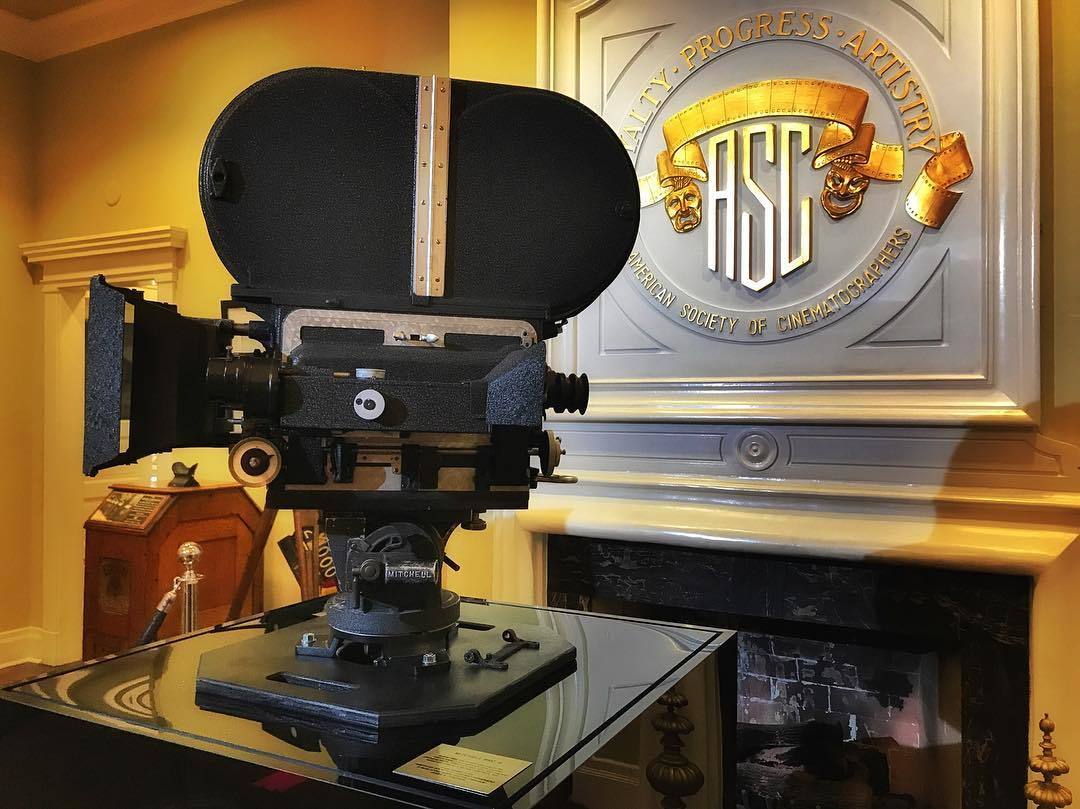If you ever have the opportunity to visit the American Society of Cinematographers at their home in Hollywood, here’s some background on the Society and the historic ASC Clubhouse that you might want to keep in mind.
The ASC was founded in Hollywood in 1919 with the dual purpose of advancing the art and science of cinematography and bringing cinematographers together to exchange ideas, discuss techniques and promote the motion picture as an art form — a mission that continues today.

The ASC was the first organization in the film industry to be devoted exclusively to furthering and honoring professional achievement. It is not a labor union or a guild, but an educational, cultural and professional organization. Membership is extended by invitation to those who are actively engaged as directors of photography and have demonstrated outstanding ability.
The 15 original ASC members were Joe August, L.D. Clawson, Arthur Edeson, William C. Foster, Eugene Gaudio, Fred Le Roy Granville, Walter L. Griffin, J.D. Jennings, Roy H. Klaffki, Victor Milner, Robert S. Newhard, Philip E. Rosen, Charles G. Rosher, Homer A. Scott and L. Guy Wilky. (Here’s the current ASC membership roster.)
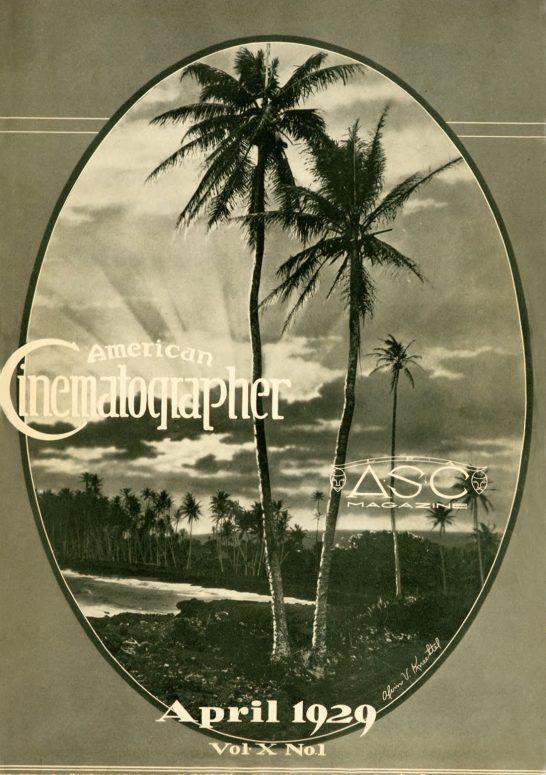
The ASC began publishing a four-page newsletter called The American Cinematographer in 1920. It was published twice monthly until March 1922, when it became a monthly, and American Cinematographer magazine has been published every month since then. The ASC also publishes the American Cinematographer Manual, a vital technical resource that is commonly known as “the filmmaker's bible.”
During the early 1920s, silent film star Conway Tearle purchased one of the original homes built on North Orange Drive right in the heart of Hollywood — which was then still largely agricultural and undeveloped. Here’s a selection of photos of the neighborhood and building from that time, which will give you some reference for how much things have changed since (note arrow):
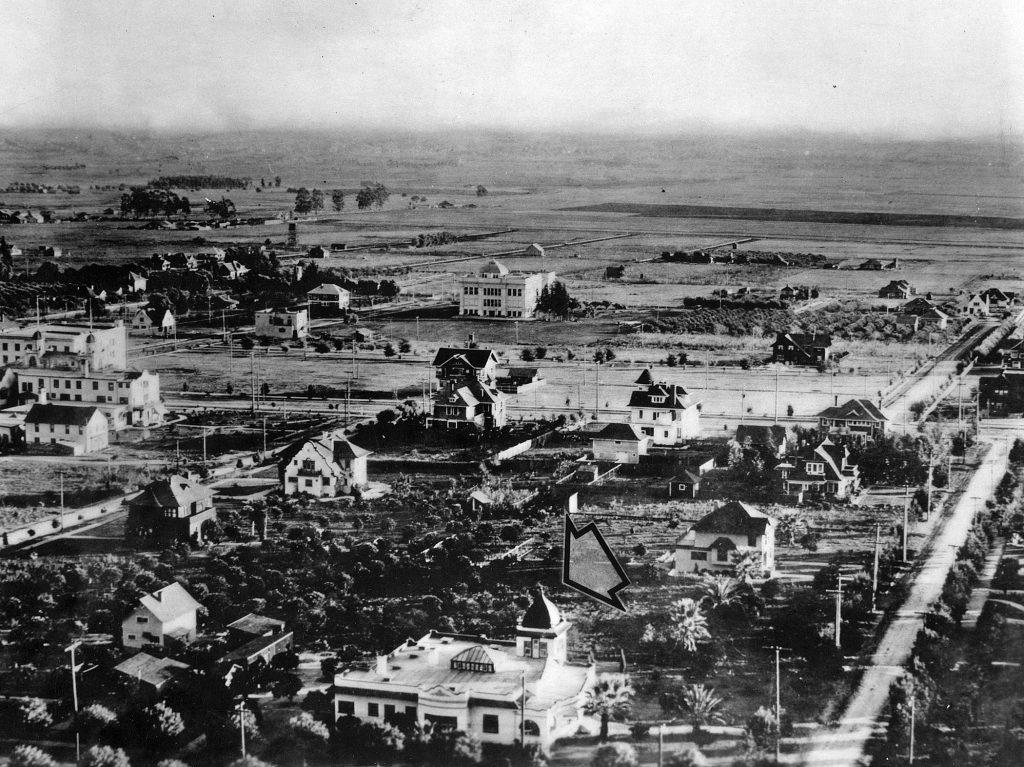
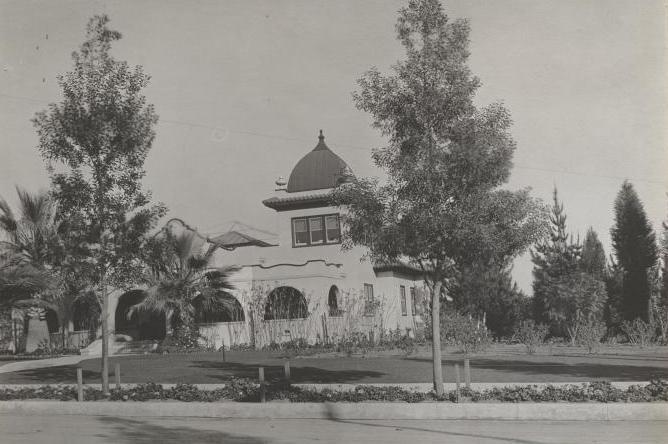
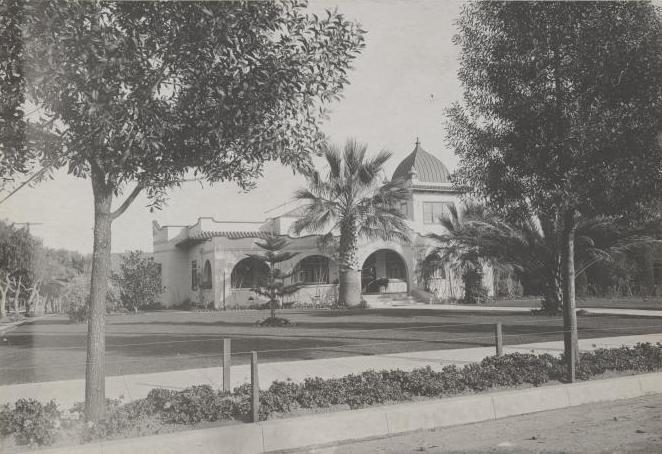
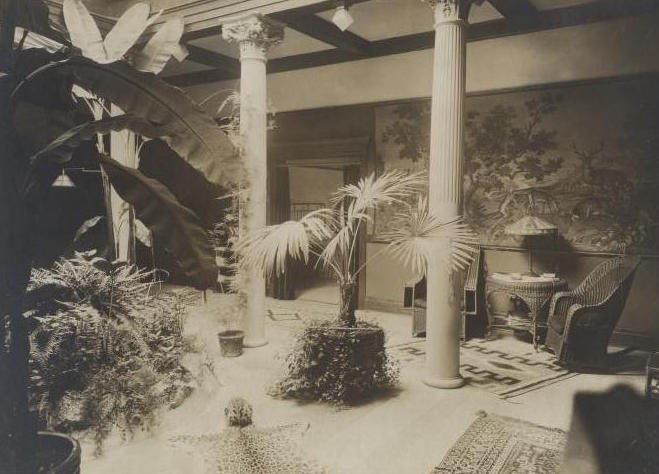
In 1936, the ASC — after occupying offices at two different locations on Hollywood Boulevard — bought and converted Tearle’s home into their Clubhouse that served as a focal point where cinematographers informally gathered at the end of work days at the studios in addition to formal meetings. The grand opening for the site was held February 28, 1937.
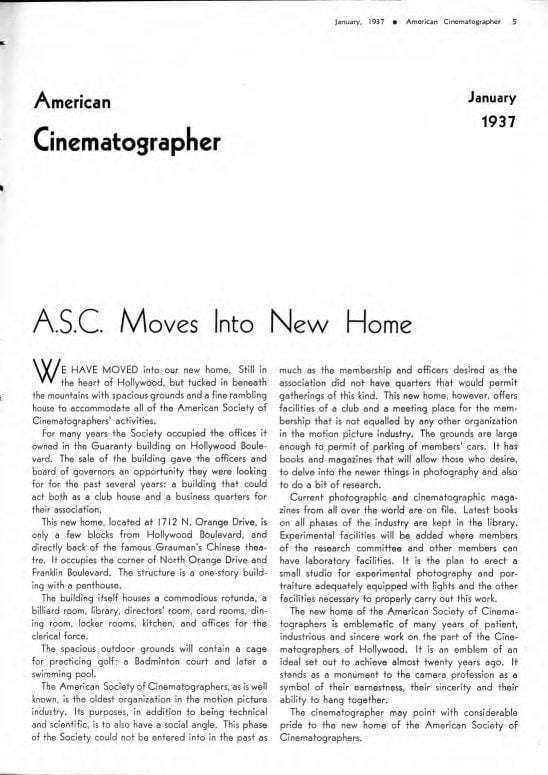
Here’s an article from the January 1937 issue of AC magazine announcing the move to the new Clubhouse.
As noted in the piece:
We have moved into our new home. Still in the heart of Hollywood, but tucked in beneath the mountains with spacious grounds and a fine rambling house to accommodate all of the American Society of Cinematographers activities... The new home, located at 1782 N. Orange Drive, is only a few blocks from Hollywood Boulevard, and directly back of the famous Grumman's Chinese theater. It occupies the corner of North Orange Drive and Franklin Boulevard. The structure is a one-story building with a penthouse.
And here’s another article, from the April issue of that same year, chronicling the festivities that took place at the Clubhouse on February 28.
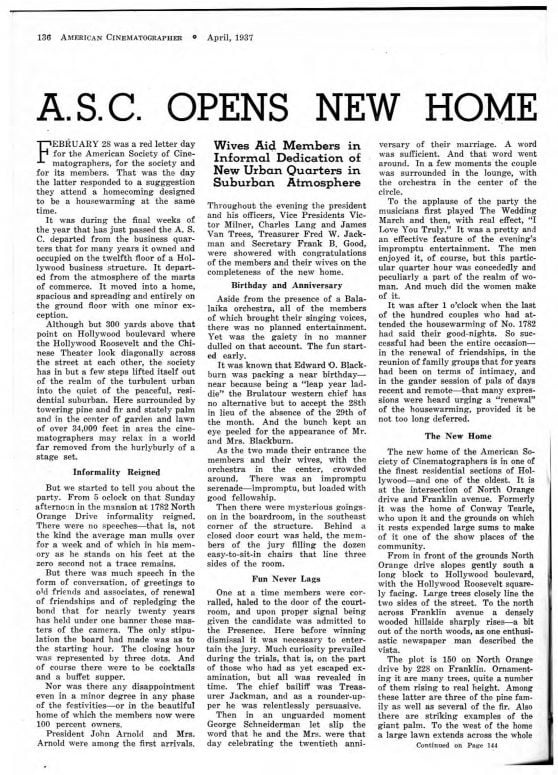
As detailed in the story:
But we started to tell you about the party. From 5 o’clock on that Sunday afternoon in the mansion at 1782 North Orange Drive, informality reigned. There were no speeches — that is, not the kind the average man mulls over for a week and of which in his memory as he stands on his feet at the zero second not a trace remains. But there was much speech in the form of conversation, of greetings to old friends and associates, or renewal of friendships and of repledging the bond that for nearly twenty years has held under one banner these masters of the camera. The only stipulation the [ASC] board had made was as to the starting hour. The closing hour was represented [on the invitation] by three dots. And of course there were to be cocktails...
As the decades passed, the ASC grew in membership and stature, Hollywood grew up around the Clubhouse, as seen in this image from 1957 (again, note arrow):
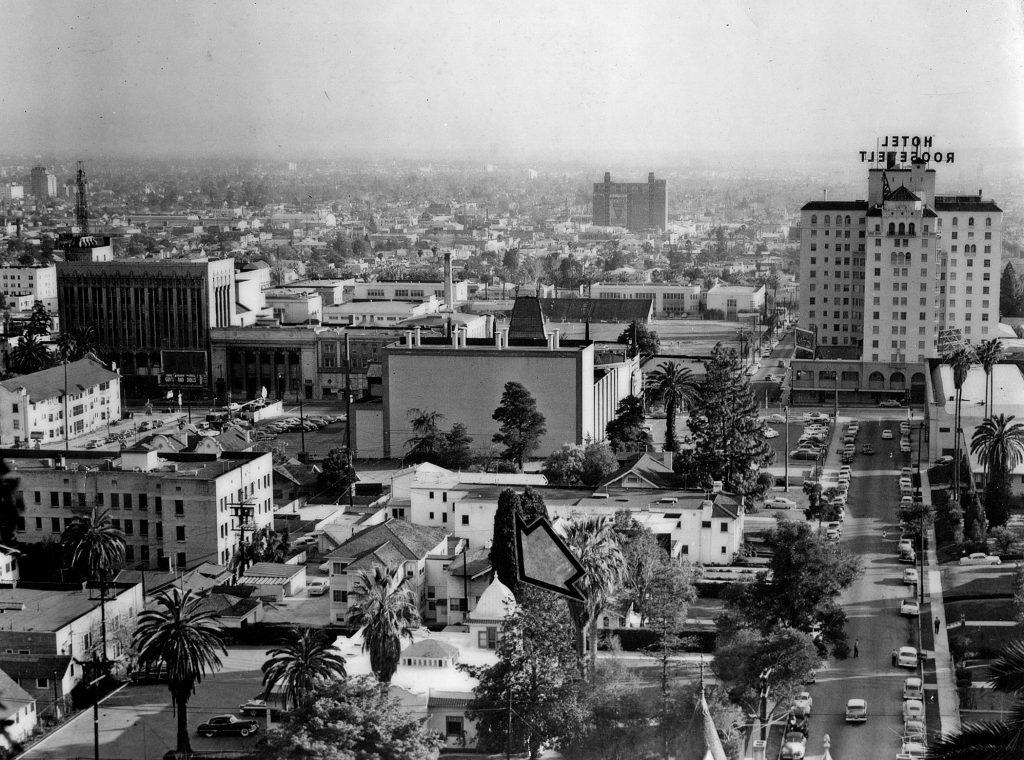
Other than some minor modifications, the Clubhouse remained virtually unchanged for all of these years. Here’s a shot, from another angle, taken in the 1980s.
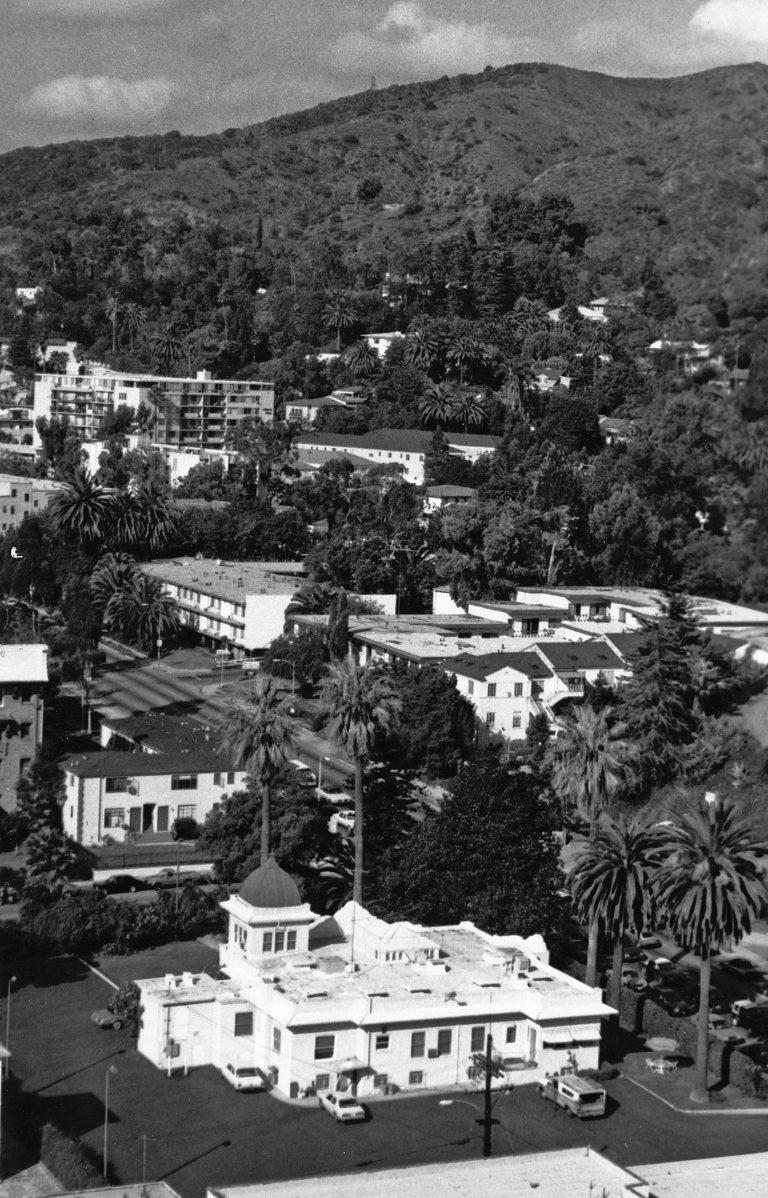
On May 7, 2008, The ASC hosted a groundbreaking ceremony before launching a major renovation of the Clubhouse:

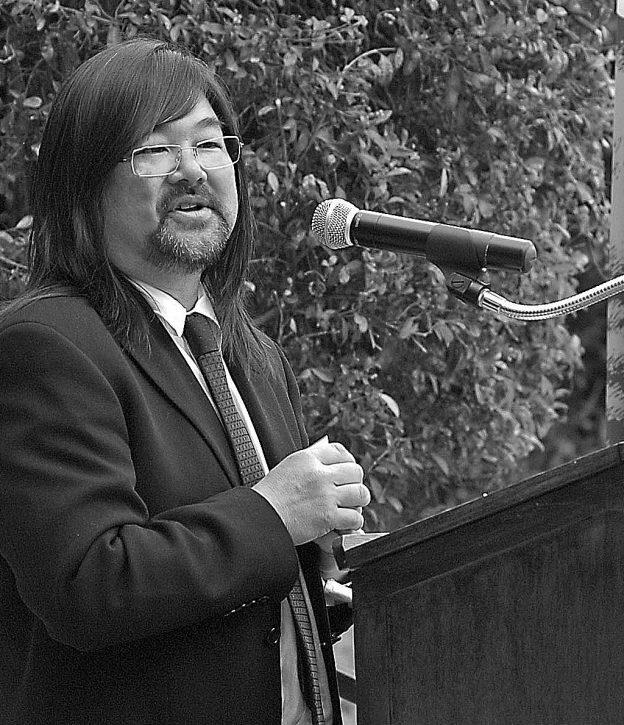
“This project is a continuation of our historic commitment to fellowship and progress in the art of filmmaking,” announced ASC President Daryn Okada. “It will enable us to accommodate larger meetings and seminars for our members, collaborators and students, who are the future generation of filmmakers, while preserving the legacy of the original building, which is a treasure trove of early film history.” The renovation project added 1,500 square feet to the original Clubhouse.
“Every ASC member has been inspired by our heritage,” said Owen Roizman, chairman of the ASC Building Committee. “We all share an obligation to preserve and enhance that legacy for the next generation.”
“Our plans call for making a number of improvements to the building, but everyone should know that first and foremost, we are steadfastly committed to preserving the character and charm of this place we love so much,” Roizman continued. “There is a lot of history within these walls, and we will be very careful to not disturb the ghosts. Of course, no matter what, I’m sure that Stanley Cortez will still be haunting us in our new surroundings. I think our founding fathers would be proud that we are preserving and continuing their original vision.”
“It’s exciting that after 70 years of owning this historic house, the ASC is expanding and improving it,” said Los Angeles city council member Eric Garcetti, whose district included Hollywood. “I can only imagine the creativity and innovation that has resulted from conversations here, and I’m proud that the oldest operating motion picture society calls Hollywood its home.” Today, Garcetti is the mayor of Los Angeles.
Here are some images of the extensive demolition and construction work, taken by Isidore Mankofsky, ASC:
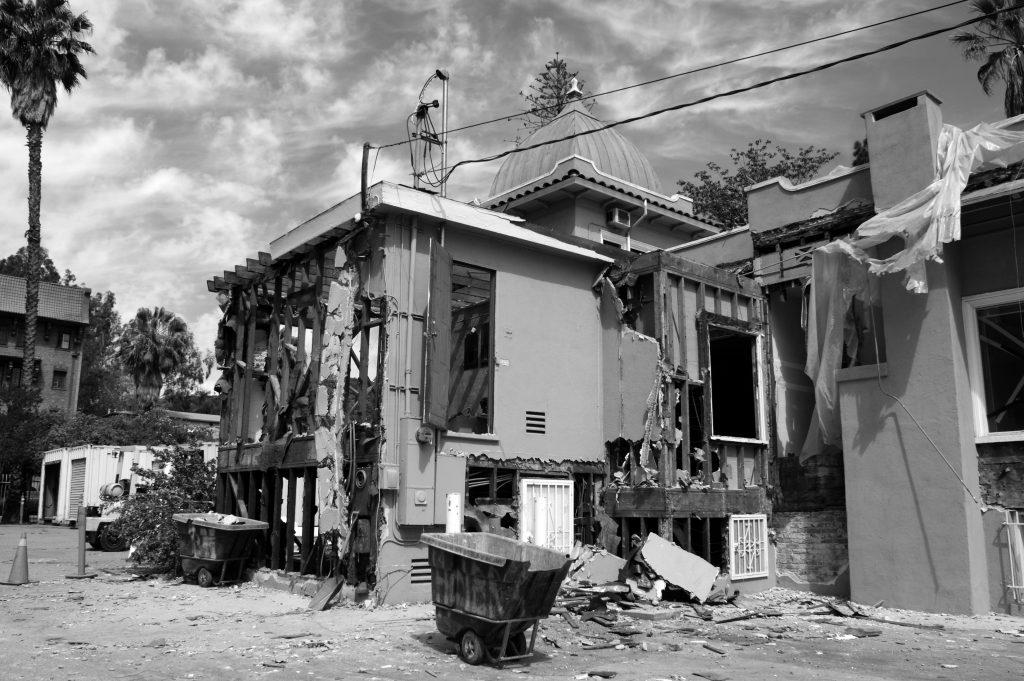
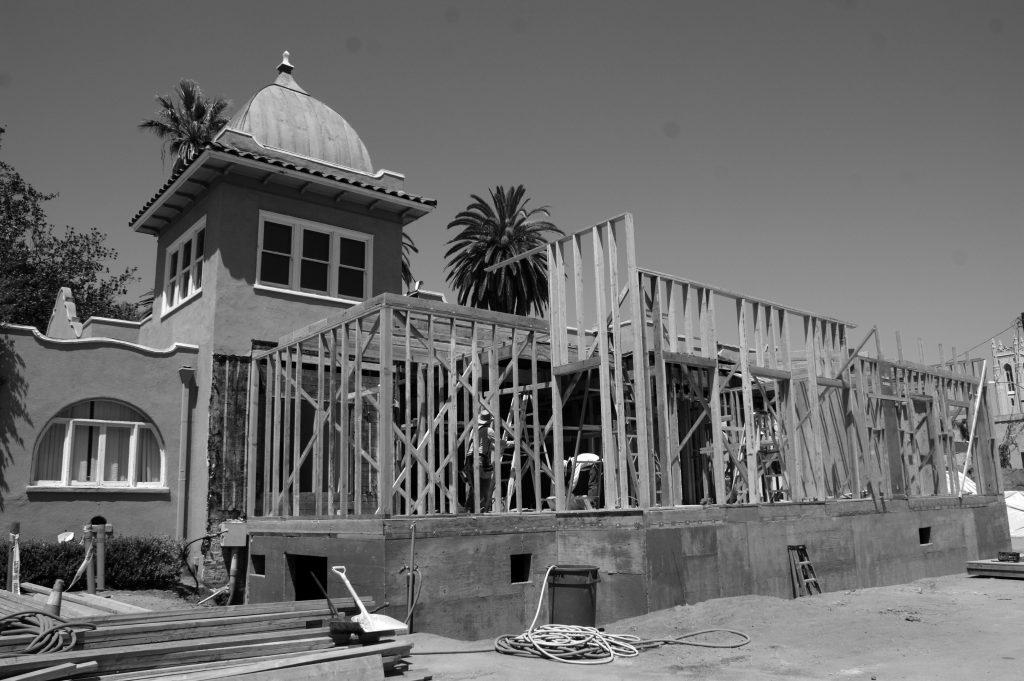

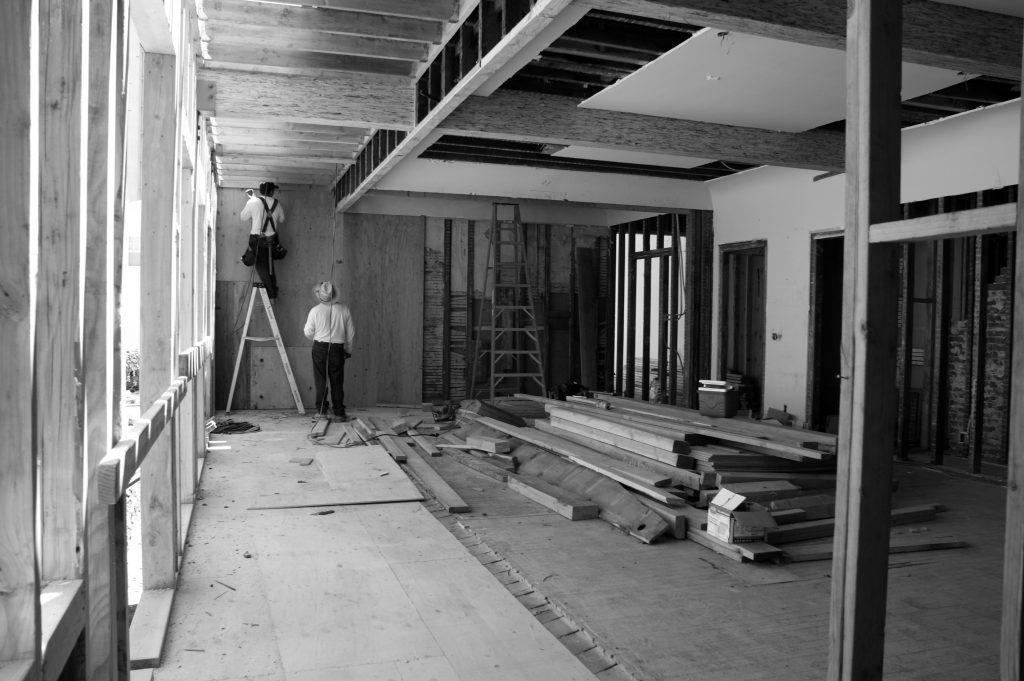
The ASC Clubhouse renovation was completed in 2010, with a re-opening ceremony held on June 3. And the facility was soon back in use for activities including ASC dinner meetings, ASC Master Class sessions, meetings between student groups and ASC members providing guidance, and such ambitious events as the International Cinematography Summit and Day of Inspiration, the latter of which focused on the growing role of women in cinematography.
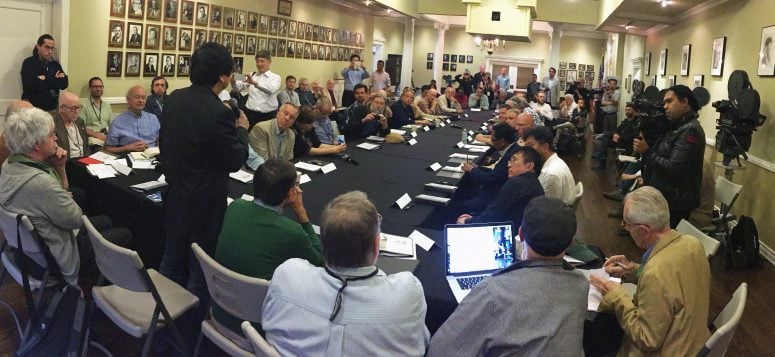
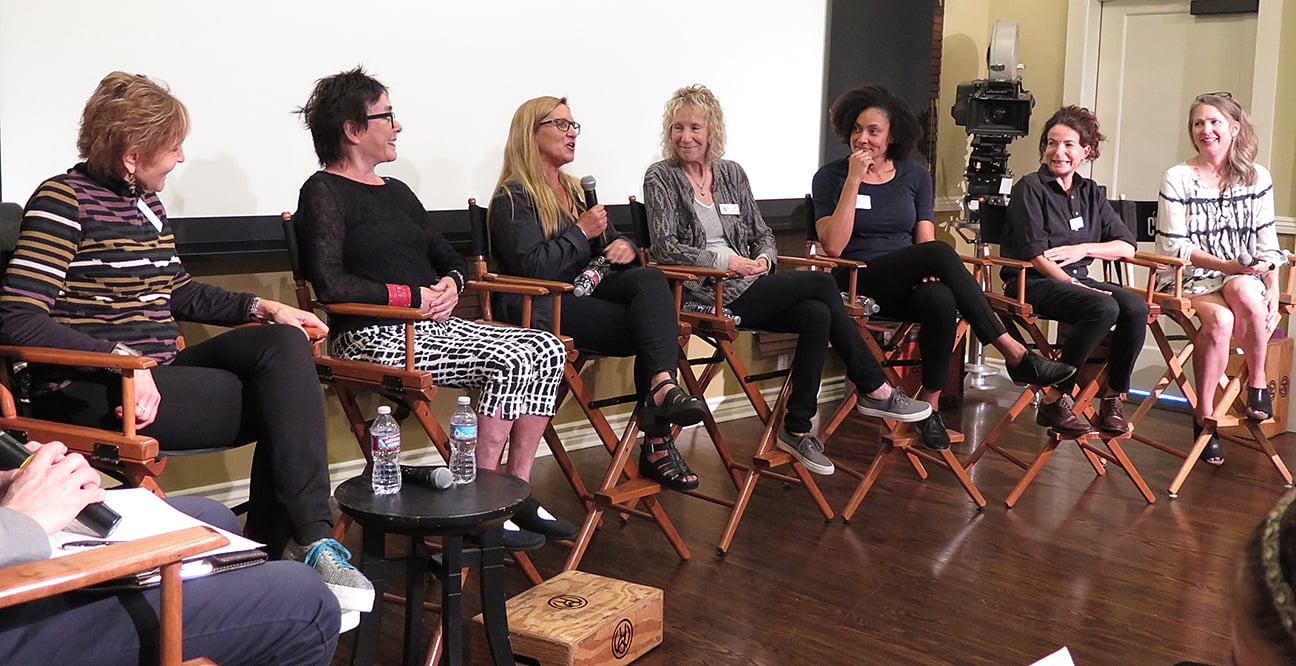
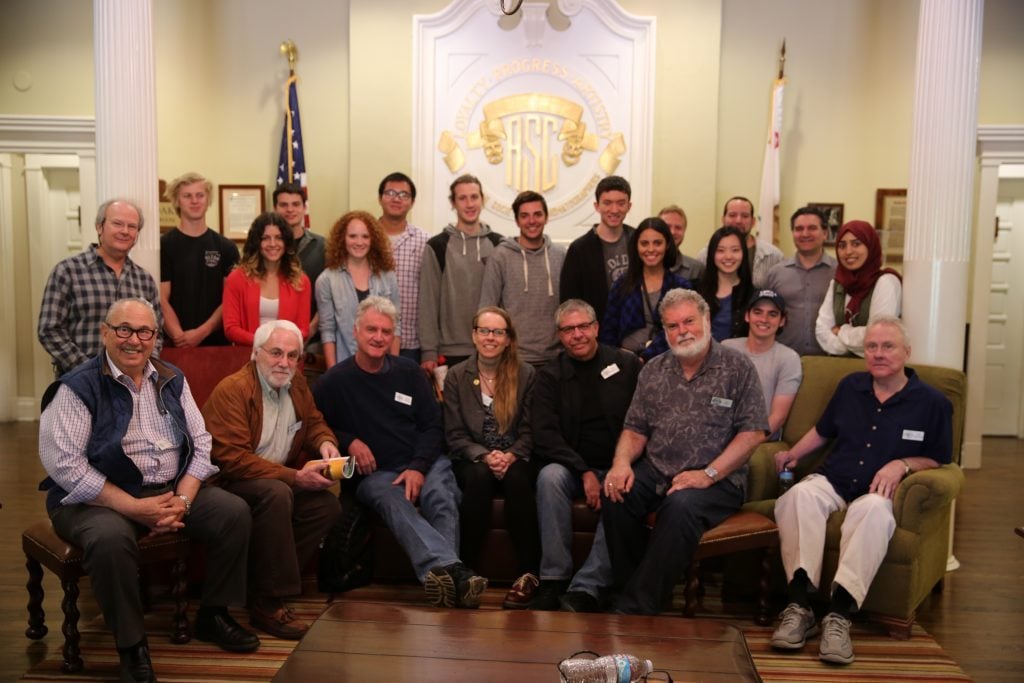
Over the years, the ASC has collected cameras, lenses, and other artifacts of early motion picture history that have been donated by members and friends of the Society, some of which are on display at the Clubhouse on a rotating basis. A unique library of books, photos and other historical documentation and memorabilia are also housed at the site, curated by Steve Gainer, ASC.
Recently, ASC associate member Jim Jannard donated a rare Mitchell Standard camera — serial number 5 off the assembly line.
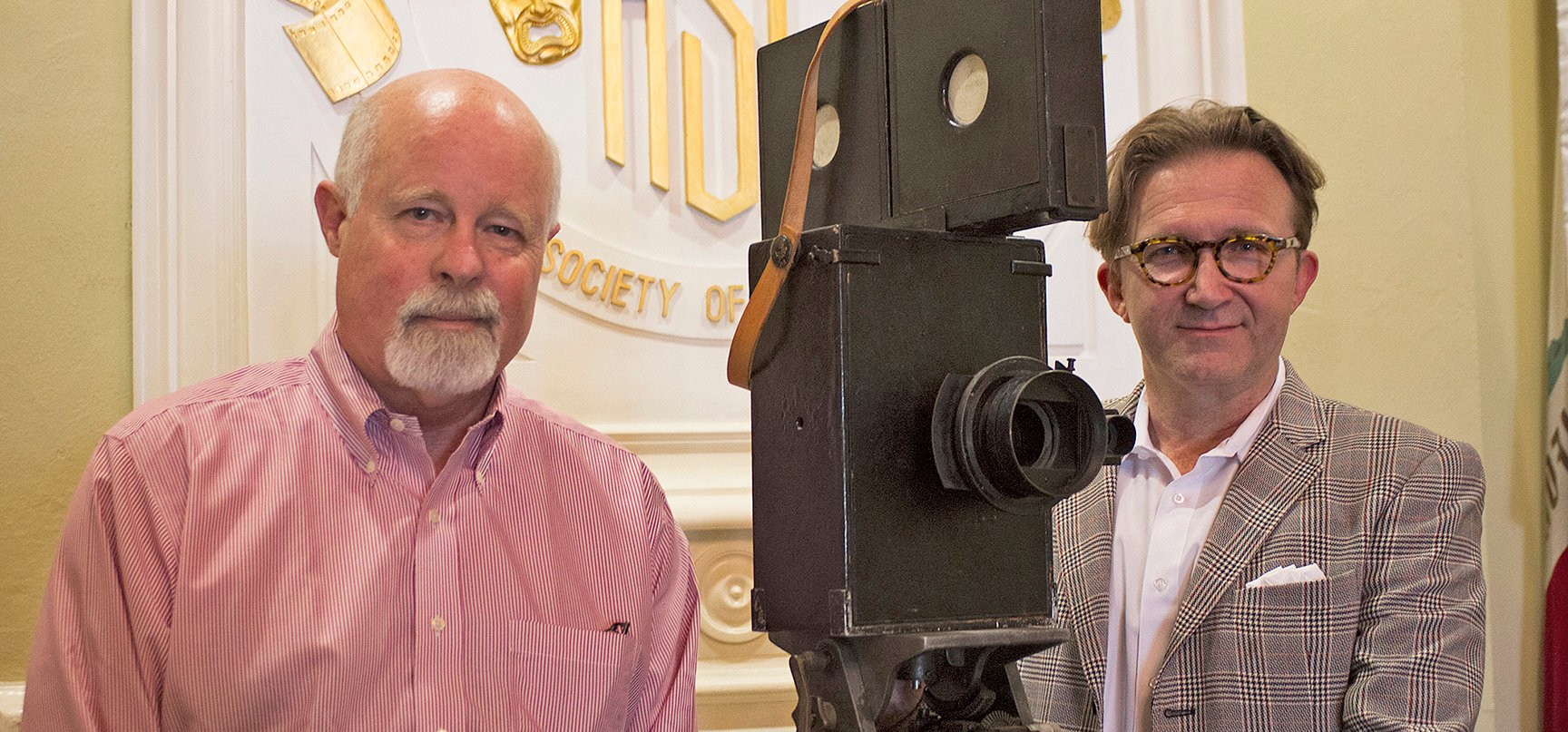
And Jim Mitchell (above, on left, with Gainer) — whose father George had been an ASC associate member — entrusted Arthur C. Miller, ASC’s classic Pathé Studio camera to the Society.
Recently, the ASC unveiled another exceptional addition to the collection, MItchell BNC serial number 2, which was purchased new in 1935 by the Samuel Goldwyn Company for use by Gregg Toland, ASC, who photographed numerous outstanding films with it, including Citizen Kane (1941). Years later, the camera was purchased by J. Burgi Contner, ASC — who used No. 2 for many decades on motion pictures, TV series and commercials — and it was donated to the ASC by his son, cinematographer/director James A. Contner.

The ASC Clubhouse is open to the public by appointment on weekdays during normal business hours. Please call (323) 969-4333 or email [email protected] to make one.
Educators interested in having their student group meet with the ASC Education & Outreach program can email Patty Armacost.
